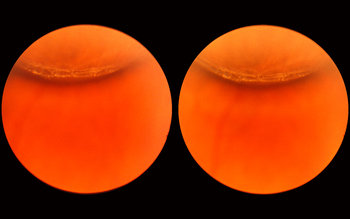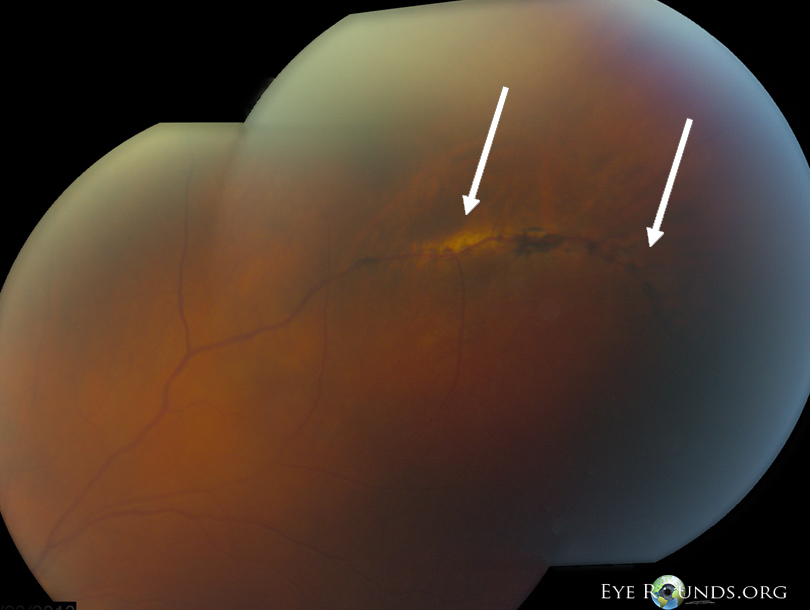


The diagnosis of an atrophic retinal hole is a clinical one. If associated with a retinal detachment patients may experience visual symptoms such as photopsias, floaters, or loss of visual field. Subretinal fluid, if present, may involve up to 360 degrees of the lesion's edge and spread slowly under the surrounding retina resulting in either a symptomatic or asymptomatic retinal detachment.Ītrophic holes are asymptomatic in a majority of patients. Subretinal fluid may accompany these lesions. As mentioned prior, they take a round or oval shape and lack a "tag" that is seen with a classic horseshoe tear.


#Symptoms of lattice degeneration Patch
They may be surrounded by pigmentation, especially if chronic and embedded withing a patch of lattice degeneration.
#Symptoms of lattice degeneration full
Retinal holes are full thickness breaks in the sensory retina. An indirect ophthalmologic examination with scleral depression may be required to indentify retinal holes adjacent to the ora serrata.Ĭareful attention should be used when examining myopic patients and those patients with lattice degeneration due to the increased incidence in these populations. Slit lamp examination with special attention to the peripheral fundus is important in the evaluation of this disorder. Some patients may present with a complaint of photopsias (flashing lights) or other visual disturbance if associated with a symptomatic posterior vitreous detachment. This type of lesion is generally an incidental finding. Patients with atrophic retinal holes generally present for routine ocular examinations. This is a clinical diagnosis based on history and clinical exam, including slit lamp and dilated fundus examination. There are no preventative measures to the development of atrophic retinal holes. This pathology precludes traction of the vitreous to the underlying sensory retina. As the blood supply to the retina is shut down, the retinal tissue subsequently dies in conjunction with degeneration of the surrounding vitreous. It has been postulated that the pathogenesis of this lesion stems from an atrophic pigmented chorioretinopathy that is associated with retinal vessel sclerosis and a disturbance of the overlying vitreous. These lesions often take a round or oval shape. Retinal holes are the result of chronic atrophy of the sensory retina. The incidence of this association has been reported as high as 43%. Often, these lesions are found in association with lattice degeneration. They are the result of atrophic changes/thinning within the sensory retina that is not induced by vitreous adhesions. There appears to be no sex predilection.Ītrophic retinal holes are full thickness retina breaks often existing in the peripheral retina. Atrophic holes often present in the peripheral (temporal or superior) retina. It has been estimated about 5% of the general population has atrophic holes. There are no generally accepted risk factors for this condition but lesions have been cited more often in younger myopic patients. Idiopathic atrophic retinal hole is the most common presentation. Round hole of retina without detachment ICD-10 H33.32 (non-billable) retinal breaks without detachment ICD-10 H33.3 (billable)Īn atrophic retinal hole is a break in the retina not associated with vitreoretinal traction.


 0 kommentar(er)
0 kommentar(er)
